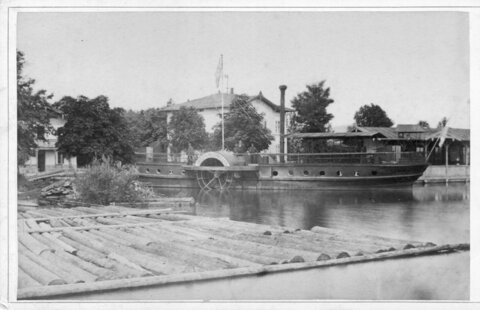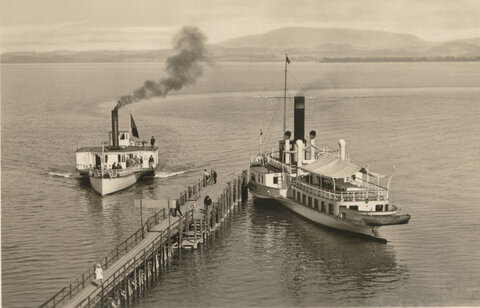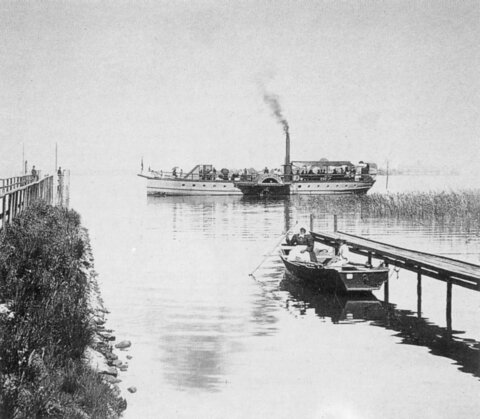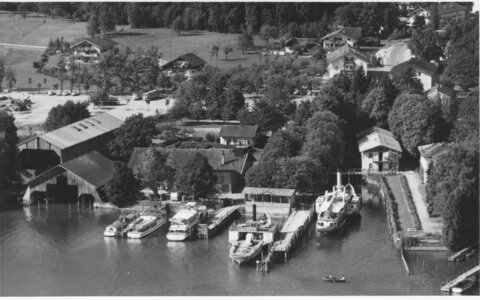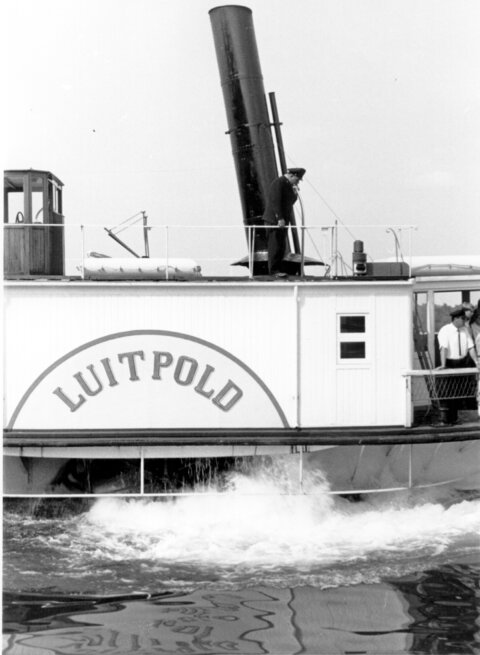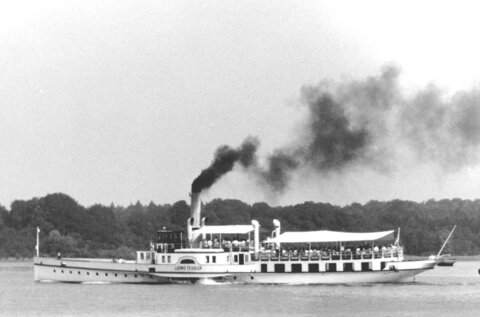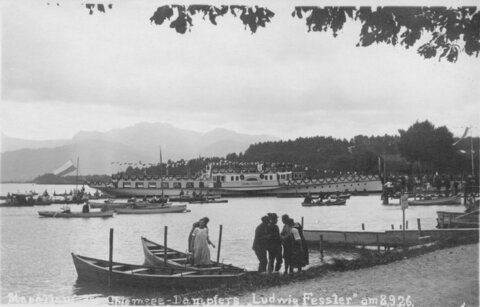History of Chiemsee-Schifffahrt
For over 170 years, Chiemsee steam boats have been safely and conveniently transporting passengers across the lake and to the islands all year round.
In the beginning...
Feßler's copper works in Munich built a boiler for a steam ship belonging to the carpenter Wolfgang Schmid from Grassau that was put into service in 1845. As Schmid had failed to use suitable materials for his boat's hull, the boiler had to be constantly repaired by Joseph Feßler at great expense.
Wolfgang Schmid had grown tired of having to pay the coppersmith in Munich for repairs from his meagre shipping income. When the boiler was back in Munich for repair in winter 1846/47, Wolfgang Schmid withdrew from the expensive shipping business and handed the operation over to Joseph Feßler. Together with the innkeeper, Alois Sedelmeier from Chieming, he applied for permission to run the shipping operation on Lake Chiemsee. Permission was granted on 25 February 1848.
A family business...
Chiemsee-Schifffahrt has been owned by the Feßler family since the middle of the 19th century, and is now run by its fifth generation.
What's the link between the first iron steam boat - the HERZOG MAXIMILIAN - and a sawmill...
Joseph Feßler commissioned the Maffei workshops in Munich to build an iron steam boat in 1858. The HERZOG MAXIMILIAN was launched on 14 May 1859.
During the construction of his new steam boat, Joseph Feßler had already considered how he might use his expensive purchase outside of the short summer season. There was plenty of wood around the lake, logs can float and there was no sawmill in the immediate vicinity. So a sawmill and canal were built. The new steam ship, HERZOG MAXIMILIAN, could now approach the saw gates via the canal. Its paddle wheels were removed and a pulley attached to one end of the steam boat's axle. The steam power from the engine could now be transferred via a belt to the saw gates anchored firmly on the shore.
A loss-making business...
Difficult years followed, until the palace was built on Herreninsel. Shipping was greatly reduced and temporarily suspended.
The construction of the Royal Palace on Herreninsel ensured a stable income...
King Ludwig II of Bavaria had started to build his magnificent palace in 1878. The 103 m long facade of the main building swallowed up vast quantities of building materials, meaning that Feßler's steam ship had to carry many loads across the lake. After all the lean years, this ensured a more stable financial situation. Passenger volumes began to increase whilst the place was still under construction, because lots of curious people wanted to take a look at the huge building site. When the palace was opened to the public following the death of Ludwig II in 1886, there was no end to the stream of visitors and more boats had to be purchased. In 1887, the steam boat, Luitpold, was commissioned. The Chiemsee steam railway that started operating in 1887 also helped cope with the flood of visitors.
The Second World War and post-war years...
First of all, more and more employees had to swap their uniforms and head for the front. Then coal became scarce and finally, the larger boats had to be decommissioned. Only a few smaller boats kept the islands supplied. At the end of the war, shipping was initially completely suspended. Until July 1945, the islands were only supplied by rowing boats. Gradually, shipping resumed. Today, Lake Chiemsee and its Fraueninsel and Herreninsel are popular destinations for visitors from home and abroad.
"Ludwig Fessler" paddle steamer
History enthusiasts can still experience the good old days aboard the historic "Ludwig Fessler" paddle steamer.
The "Ludwig Fessler" saloon steamer was commissioned in spring 1927. The paddle steamer was produced by the Theodor Hitzler shipyard in Regensburg. The steam boiler and engine came from J. A. Maffei in Munich. The boat was assembled in Prien am Chiemsee starting in spring 1926. It was a busy time: components were delivered incessantly and workers hammered and riveted, carpentered and painted. Everyone involved eagerly awaited the completion of the 53 m long and 11.60 m wide boat.With its elegant appearance, tasteful saloon and unique atmosphere, the steam boat quickly became a popular pleasure boat. During the bitter war years, the "Ludwig Fessler" paddle steamer was decommissioned, as its crew were at the front and coal was scarce. It wasn't until 1949 that the paddle steamer was again used to transport the now steadily growing number of passengers.Its conversion in 1972/73 put an end to the magical era of coal, when its steam engine was replaced by a modern diesel engine. Instead of a 7-man crew, only 3 people were now required. But the romanticism of the paddle steamer has remained, long after its conversion. The paddle steamer is still incredibly eye-catching and taking a trip on it is a very special experience.

